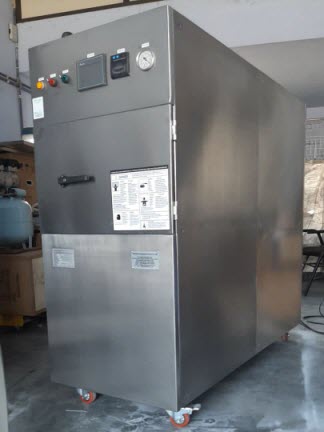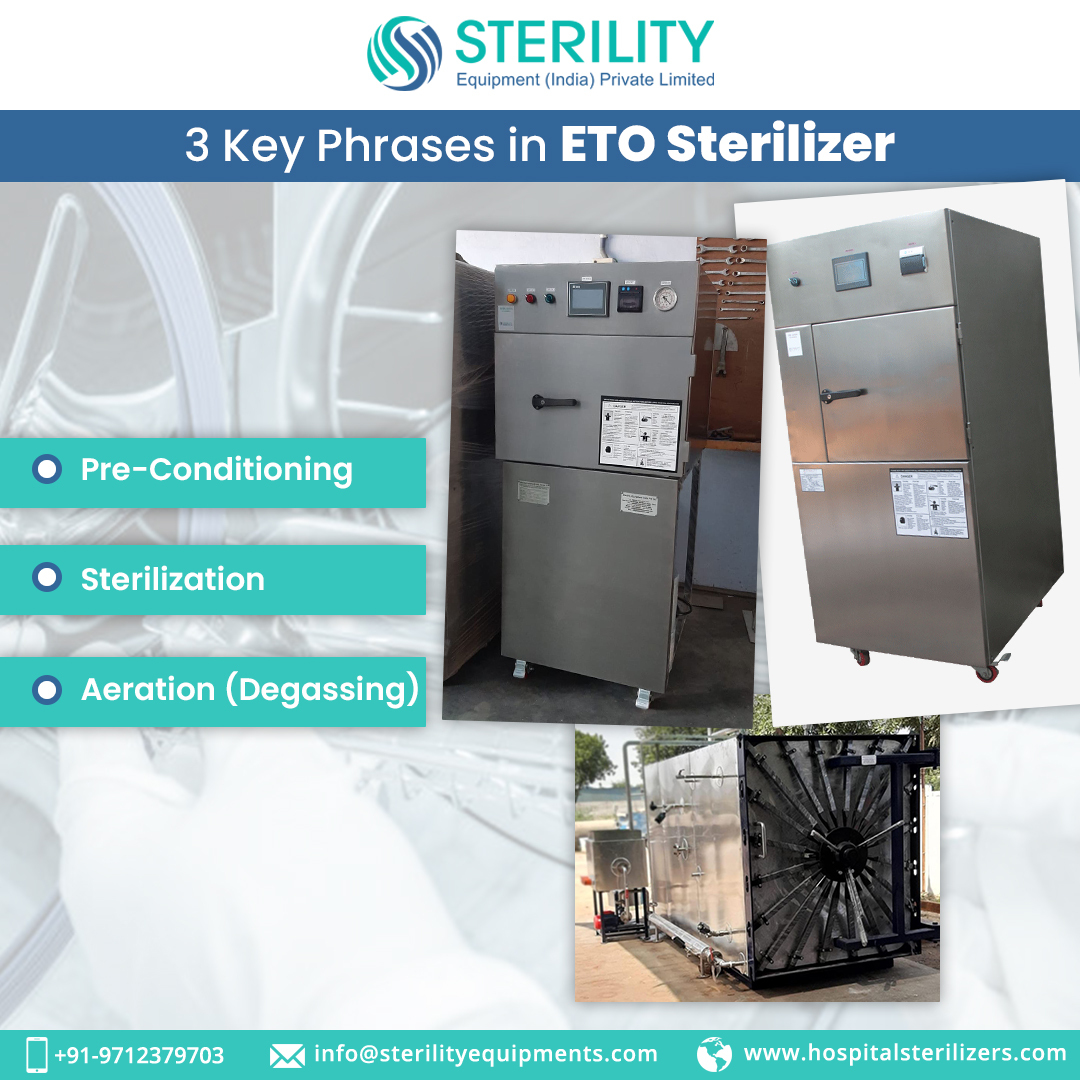Ethylene Oxide (ETO) Sterilizers play a pivotal role in the USA medical device manufacturing sector by ensuring both patient safety and adherence to regulatory compliance.
ETO Sterilizers are indispensable for medical devices due to their ability to effectively eliminate harmful microorganisms. This critical sterilization process guarantees that medical devices are free from pathogens before they reach the hands of healthcare professionals and patients, thus preventing potential infections and complications.
Understanding ETO Sterilization: A Vital Process for Medical Devices
Discover the ins and outs of ETO sterilization, an indispensable method for effectively eliminating microorganisms from complex medical devices. Learn how this process safeguards patient well-being and adheres to stringent industry standards.
ETO sterilization plays a crucial role in ensuring the safety and reliability of medical devices. By utilizing Ethylene Oxide, this sterilization method effectively targets and eradicates microorganisms, making it particularly suitable for intricate and sensitive medical equipment. Ensuring patient safety is paramount, and ETO sterilization provides a vital solution in preventing infections and complications.
The medical device industry adheres to stringent standards to guarantee the highest quality and safety. ETO sterilization not only meets but exceeds these industry regulations, making it a preferred choice for manufacturers. Through rigorous validation processes, the effectiveness and reliability of ETO sterilization are continually verified, ensuring consistent and dependable results.
Embracing the advancements in ETO sterilization technology has led to increased efficiency and precision. Manufacturers can now confidently produce safe and reliable medical devices, protecting patient well-being and maintaining the industry’s reputation for excellence.

The Advantages of ETO Sterilizers: Efficiency, Cost-effectiveness, and More
One of the primary advantages of ETO sterilizers is their ability to effectively sterilize heat-sensitive medical devices. Unlike traditional high-temperature methods, ETO sterilization employs a low-temperature process that ensures delicate instruments and electronic components remain unharmed. This efficiency allows for a wider range of devices to be safely sterilized, minimizing the risk of damage during the process.
Medical devices often possess intricate designs and hard-to-reach areas, making sterilization challenging. ETO sterilization’s gaseous nature allows Ethylene Oxide to penetrate deep into the device’s crevices, ensuring thorough sterilization even in complex structures. This compatibility makes ETO sterilization a preferred choice for a wide range of medical instruments.
For manufacturers operating on a large scale, cost-effectiveness is paramount. ETO sterilization offers economic advantages, especially in high-volume production settings. Its ability to process a significant number of medical devices in a single cycle reduces overall production costs, enabling competitive pricing and streamlined manufacturing.
Medical devices are composed of diverse materials, each requiring careful sterilization. ETO sterilization showcases its versatility by effectively sterilizing a wide array of materials, including plastics, metals, and more. This adaptability ensures that the quality and integrity of the medical devices remain uncompromised.
Medical devices subjected to ETO sterilization enjoy an extended shelf life due to the process’s gentle nature. With reduced exposure to high temperatures or harsh chemicals, the devices maintain their functionality and efficacy over an extended period, benefiting both manufacturers and end-users.
Navigating Regulatory Requirements: ETO Sterilizers and Compliance
The Food and Drug Administration (FDA) plays a central role in regulating ETO sterilization practices for medical devices in the USA. The FDA sets forth comprehensive guidelines that manufacturers must follow to gain approval for their devices. These guidelines encompass every aspect of the sterilization process, from equipment validation to monitoring of ETO residuals on devices.
In addition to FDA regulations, ETO sterilizer manufacturers and medical device companies must comply with international standards set by the International Organization for Standardization (ISO). ISO provides specific guidelines for the validation and routine control of ETO sterilization processes, ensuring global consistency and safety.
Good Manufacturing Practices (GMP) are critical in the medical device industry to ensure the highest quality and safety of products. Manufacturers employing ETO sterilization must strictly adhere to GMP guidelines, covering various aspects of production, sterilization, and quality control.
Each medical device may have unique specifications and materials that necessitate specific sterilization processes. Regulatory bodies require manufacturers to establish device-specific protocols, demonstrating that the chosen ETO sterilization method effectively eliminates microorganisms without compromising device integrity.
Validation is a crucial step in ensuring the effectiveness and reliability of the ETO sterilization process. Manufacturers must conduct rigorous tests to confirm that the sterilization cycle consistently achieves the desired level of microbial reduction, and that the process does not compromise device performance or safety.
Overcoming Challenges: Addressing Emissions and Safety Concerns
The release of Ethylene Oxide (ETO) during the sterilization process can have environmental implications. ETO is a potent greenhouse gas and can contribute to air pollution if not properly managed. To address this concern, manufacturers are implementing emission control measures and investing in advanced equipment designs that minimize ETO emissions.
Ensuring a safe working environment for personnel involved in ETO sterilization is of paramount importance. Exposure to high levels of ETO can be harmful to employees’ health. To safeguard workers, industry leaders are adopting stringent safety protocols, conducting regular monitoring of ETO levels, and providing proper personal protective equipment (PPE) to mitigate any potential risks.
In response to emissions and safety concerns, researchers and manufacturers are exploring alternative sterilization methods. Technologies such as hydrogen peroxide gas plasma and radiation sterilization offer promising alternatives that are both effective in sterilization and environmentally friendly, reducing the reliance on ETO sterilization.
Ensuring the effectiveness of ETO sterilization while reducing emissions involves comprehensive validation and process optimization. Industry leaders are continually refining their sterilization processes to achieve the desired microbial reduction levels while minimizing ETO consumption and emissions. This approach allows for a more sustainable and efficient sterilization process.
ETO Sterilization Validation: Ensuring Effectiveness and Reliability
ETO sterilization validation is a systematic and comprehensive assessment that validates the efficacy of the sterilization process. Manufacturers must demonstrate that ETO sterilization consistently achieves the desired level of microbial reduction on medical devices, ensuring they are free from harmful pathogens.
The validation process employs various methods to evaluate the effectiveness of ETO sterilization. These methods may include physical testing, chemical indicators, biological indicators, and monitoring of critical parameters. By combining these approaches, manufacturers can obtain a comprehensive picture of the sterilization process’s efficiency.
Consistency and accuracy in validation results are of utmost importance. Manufacturers must conduct multiple validation cycles to ensure that the sterilization process consistently meets the required microbial reduction level. Accurate results guarantee the sterilization’s reliability, assuring that medical devices remain free from contaminants and safe for use.
ETO sterilization validation must align with regulatory requirements and industry standards. Regulatory bodies such as the FDA and ISO set guidelines that manufacturers must follow to ensure the safety and efficacy of medical devices. Compliance with these standards is crucial for gaining regulatory approval and building trust among consumers.
Ensuring Product Integrity: Packaging Considerations for ETO-Sterilized Devices
Proper packaging is vital to protect ETO-sterilized medical devices from potential contamination and damage during storage, transportation, and handling. It serves as a protective barrier that prevents the entry of microorganisms and maintains the device’s sterility until it reaches the end-user.
Selecting appropriate packaging materials is crucial to ensure compatibility with the ETO sterilization process and the medical device itself. Packaging materials must be able to withstand the sterilization conditions without compromising their integrity or the device’s functionality. Commonly used materials include medical-grade plastics, flexible pouches, and barrier films that provide a robust and secure enclosure.
Incorporating protective barriers and employing effective sealing methods are essential to prevent the ingress of contaminants. Sealing techniques like heat sealing or adhesive bonding create a hermetic seal that keeps the device sterile while also preventing moisture or environmental elements from compromising its quality.
Clear and accurate labeling is critical for ETO-sterilized medical devices. Labels should indicate the device’s sterilization status, expiration date, and handling instructions to ensure proper usage and timely disposal when necessary. Additionally, incorporating sterility indicators, such as color-changing labels or indicators, provides visual confirmation of the device’s sterility and integrity.
Packaging for ETO-sterilized medical devices must comply with relevant regulatory requirements, including FDA guidelines and international standards. Adhering to these regulations ensures that the packaging materials and processes meet the necessary safety and quality standards.






